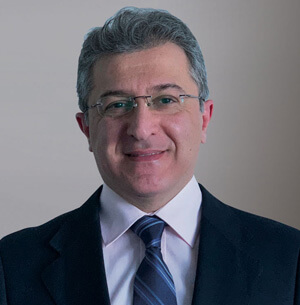Glaucoma Risk Factors
You are at higher risk for developing glaucoma in the following situations
- High intraocular pressure (IOP)
- Family history of glaucoma
- Abnormal optic nerve anatomy
- Over the age of 40
- African, Hispanic, or Asian descent
- High myopia (nearsightedness)
Even if you don’t have any of these risk factors, you should still have regular eye exams.
What Are the Types of Glaucoma Diseases?
Open-Angle Glaucoma is the most common type of glaucoma. It occurs when ocular fluid cannot pass through the eye’s filtration system (trabecular meshwork) to the drainage canals. Many people do not notice early symptoms because glaucoma attacks the peripheral vision before it affects central vision. Over time, peripheral vision is slowly diminished and eventually may lead to full blindness if not treated. Annual eye exams can help alert you to changes in vision and should be scheduled regularly.
Closed-Angle Glaucoma occurs suddenly when the eye’s fluid cannot drain and causes a rapid increase in eye pressure. A person may experience pain and sudden impairment of vision. Acute CAG requires emergency medical treatment. Permanent vision loss can happen in a short period of time with this condition. If you experience severe pain and nausea, blurry vision, and redness in the eyes you should seek immediate treatment to avoid severe vision loss.
Congenital Glaucoma
Congenital Glaucoma is a condition in which children are born with a defect in the eye’s angle. This defect interferes with fluid drainage and causes elevated pressure.
Secondary Glaucomas
Secondary Glaucomas can occur as a result of other diseases or treatments, such as:
- High blood pressure
- Diabetes
- Complications of cataract surgery
- Steroid treatments
- Uveitis (inflammation of the middle layer of the eye)
Low Tension Glaucoma occurs when patients with normal eye pressure experience damage to the optic nerve or peripheral vision loss.
Glaucoma Treatment Options
If glaucoma is detected early enough, the progress of the disease can be halted with medical and surgical treatment options. Pacific Eye Institute offers different types of treatment options, depending on your unique condition.
Glaucoma Eye Drop Treatments
Prescription eye drops for glaucoma help maintain a healthy pressure in your eye and are an important part of the treatment routine for many people with glaucoma. Be sure your doctor knows about any other drugs you may be taking (including over-the-counter items like vitamins, aspirin and herbal supplements) and about any allergies you may have. As with any medication, these eye drops have side effects which are tolerable for most patients. Sometimes, due to the general health of a patient, some types of eye drops cannot be given.
Medicated Implant Treatment: iDose®
The iDose® device is an FDA-approved, medicated implant to treat glaucoma. It slowly releases medication over several years, providing constant pressure control. iDose® allows for easier and more consistent glaucoma treatment, allowing patients to enjoy long-term relief without the day-to-day manual management.
Quick Facts about iDose®:
- Hands free, no more daily prescription eye drops
- Minimally invasive, outpatient procedure
- Implant is approximately 200x smaller than a single drop of glaucoma medication
- Medication is released directly inside your eye, where it’s most needed
- No additional irritation from liquid drops
Watch to Learn about the Process and Benefits of iDose®:
Surgical Treatments
To learn more about glaucoma treatments in the Inland Empire, contact Pacific Eye Institute today to schedule an eye exam.


















